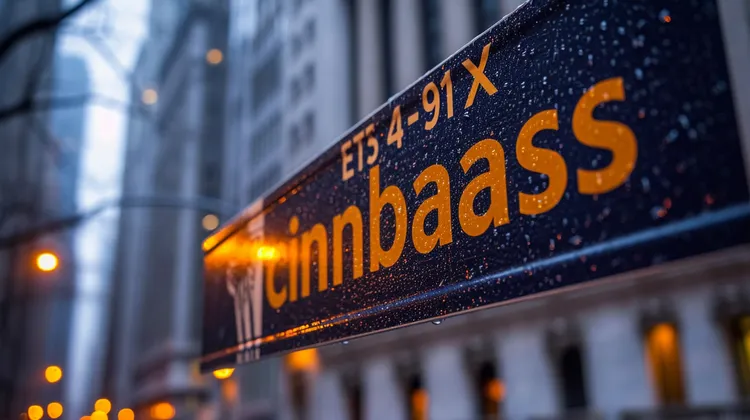On the immutable digital ledger known as the blockchain, an innovative form of financial product has been causing quite a stir – the Bitcoin ETF. This financial instrument has been a topic of contentious debate, seemingly memorializing its saga within the cryptographic annals similar to Bitcoin’s own genesis block, which infamously referenced a headline: “Chancellor on brink of second bailout for banks.” Both stand as icons of critical financial epochs, markers of the complex relationship between traditional finance and the burgeoning world of cryptocurrencies.
The chaos around Bitcoin Exchange-Traded Funds (ETFs) has been unfolding for years, as these funds have the potential to bridge the gap between conventional financial markets and the decentralized world of Bitcoin. An ETF, by design, tracks an asset or a group of assets and is traded on stock exchanges, much like regular stocks. A Bitcoin ETF would allow investors to speculate on the price of Bitcoin without the complexities of owning the actual digital currency, thereby providing an easier entry point for institutional investment and broader financial market integration.
Many in the crypto community view the approval of a Bitcoin ETF as a rite of passage, a vindication of Bitcoin’s legitimacy as an asset class. Since the Winklevoss twins first filed for a Bitcoin ETF in 2013, the journey has been fraught with regulatory hesitance and uncertainty. The U.S. Securities and Exchange Commission (SEC), the primary regulatory body in this space, has expressed concerns over market manipulation, liquidity, transparency, and the nascent nature of the cryptocurrency markets.
In the past few years, every new application seemed to bring with it a fresh wave of excitement and speculation, only to be deflated by a succession of rejections or delays. The industry sought to address these concerns by proposing various structures for their ETFs, including those holding Bitcoin derivatives such as futures contracts instead of direct holdings of the cryptocurrency.
The saga encountered numerous twists and turns, and like the mysterious message encoded in Bitcoin’s origin block, market observers began to insert their own epoch-defining messages into Bitcoin transactions. These messages captured the prevailing sentiment of the times, often filled with cynical or hopeful commentary about the state of the Bitcoin ETF applications.
This contemporary form of expression within the Bitcoin network proved to be as much a historical ledger as it was a financial one. For the most part, it echoed the defiance and the indomitable spirit of a community that prided itself on decentralization and ownership of their monetary future. It was a nod to the critical financial events that shaped Bitcoin’s creation and those that continue to define its evolution.
As applications piled up and the SEC’s stance seemed unyielding, the crypto community continued to innovate. The creation of various decentralized finance (DeFi) products and services offered alternative investment opportunities that didn’t require SEC approval, thereby partially circumventing the need for a Bitcoin ETF. Yet, the allure of such a fund remained strong due to its potential to unlock vast institutional funds.
Progress was finally made when, after much anticipation and innumerable applications, the first Bitcoin futures ETFs were approved in the U.S. in 2021. These funds allowed exposure to Bitcoin futures contracts rather than the underlying asset itself, presenting a more palatable form of a Bitcoin ETF for the regulators. Despite these approvals, the original concept of a spot Bitcoin ETF—directly tied to the price of Bitcoin itself—remained unapproved.
The launch of the futures-based Bitcoin ETFs marked both a triumph and a compromise for the crypto faithful. It was seen as a step forward for the recognition of cryptocurrencies as a legitimate financial sector, yet it underscored the ongoing tensions with regulators and the remaining obstacles to a fully realized Bitcoin ETF.
Throughout this tumultuous journey, every twist and turn has found itself etched onto the blockchain. Cryptocurrency enthusiasts have used transaction inscriptions to document their support, their frustrations, and their mocks towards the ponderous wheels of financial bureaucracy.
The “Chancellor on the brink” reference in Bitcoin’s primeval block epitomized a financial system under siege, ready for disruption. The Bitcoin ETF chaos, likewise, has become a modern-day allegory for the struggles between innovation and regulation, between a new financial paradigm and the established order clinging to the status quo.
As the blockchain continues to amass these digital footnotes, they serve as a living history of the cryptocurrency movement, embodying the hopes, chagrins, and unwavering determination of a community set on leaving an indelible mark on the world of finance. The saga of the Bitcoin ETF is but one chapter in this saga, a chapter whose ongoing narrative is written and preserved one block at a time, ensuring that future generations will remember the chaos and conviction of these trailblazing times.




Can you believe we’re witnessing financial history every time a new block is added? 😱🎇
Each SEC application brings us closer to bridging the gap between old and new finance!
Seriously, another Bitcoin ETF article? 😒 It’s time to stop with the hype and realize these things are just money grabs preying on retail investors who don’t know any better.
A Bitcoin ETF is just a way for traditional finance to get their hands into the crypto world. It betrays the whole point of decentralization. 😤
So, we’re supposed to trust these ETFs when the market is rife with manipulation and lack of transparency? No thanks. 👎